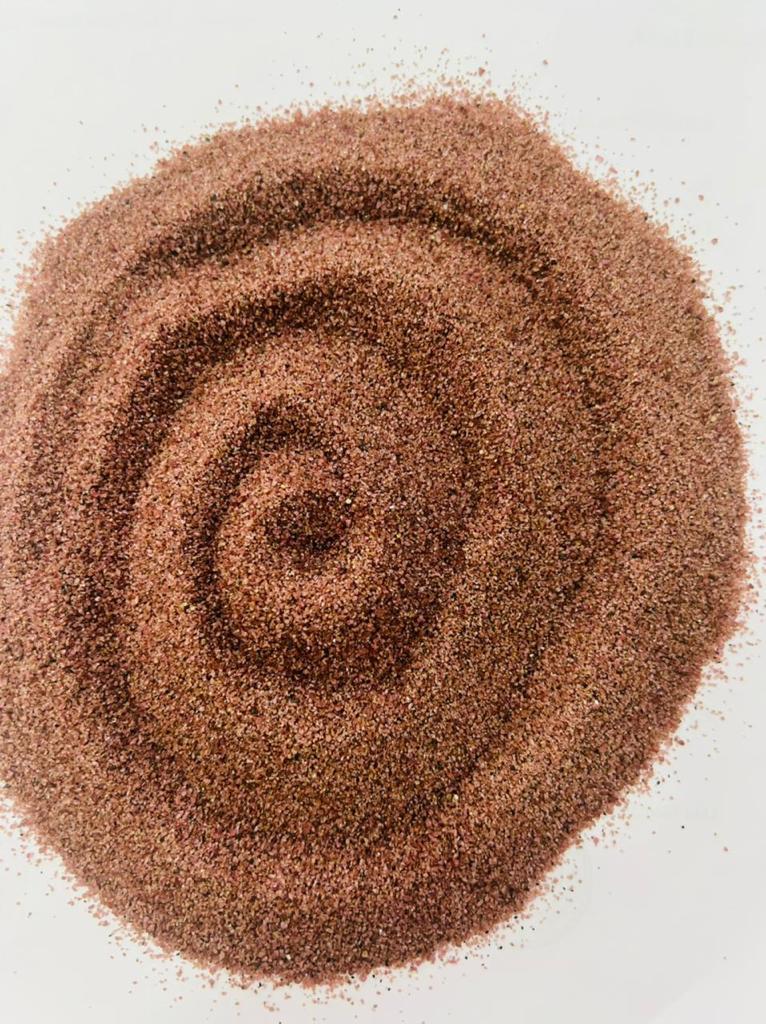Garnets are a Silicate group of minerals. Garnet produced at two mineral separation plants is Almandine Garnet [Fe3Al2(SiO4)3]. Major grades produced are Coarse grade (30-60 mesh), Normal grade (60-100 mesh) and Medium grade (50-100 mesh)
Garnet is used in :
* As abrasive for sandblasting for descaling of vessels and surface preparation.
* In water jet cutting for a precision cutting job.
* As abrasive in grinding wheels.
* As medium for water filtration.
* For rough glass polishing.

- Color
- Hardness
- Transparency
- Chemical Composition
- Varieties
- Crystal Structure
- Luster
- Cleavage and Fracture
FEATURES
The features of garnet encompass a variety of aspects, including its physical properties, geological occurrences, cultural significance, and practical applications. Here are some key features of garnet:
Physical Properties:
- Color: Garnet exhibits a wide range of colors, including red, orange, yellow, green, brown, black, and colorless.
- Hardness: Garnet has a hardness ranging from 6.5 to 7.5 on the Mohs scale, making it durable and suitable for various uses.
- Luster: It typically displays a vitreous to resinous luster when polished.
- Transparency: Garnet can be transparent, translucent, or opaque, depending on the variety.
- Crystal Structure: Garnet belongs to the isometric crystal system and commonly forms dodecahedral or trapezohedral crystals.
Varieties:
- Garnet encompasses several species and varieties, including Almandine, Pyrope, Spessartine, Grossular, Andradite, and Uvarovite. Each variety has its own distinct color and chemical composition.
Geological Occurrence:
- Garnet is found in a variety of geological environments, including metamorphic rocks such as schist, gneiss, and amphibolite, as well as in some igneous rocks and alluvial deposits.
- It occurs worldwide, with significant deposits found in countries such as India, Sri Lanka, Brazil, Madagascar, and the United States.
Cultural and Historical Significance:
- Garnet has a rich history and has been prized as a gemstone for thousands of years.
- In ancient times, garnet was believed to have mystical properties and was associated with vitality, protection, and regeneration.
- Garnet has been used in jewelry, decorative objects, and as a talisman in various cultures throughout history.
Practical Applications:
- Garnet is widely used as a gemstone in jewelry, including rings, necklaces, earrings, and bracelets.
- It is also used as an abrasive material in sandpaper, sandblasting, and waterjet cutting due to its hardness and angular fractures.
- Garnet is utilized in industrial applications such as water filtration, abrasive blasting, and cutting of materials like metal, glass, and stone.
Overall, garnet is a versatile mineral with diverse features that make it valuable both aesthetically and practically in various fields.

